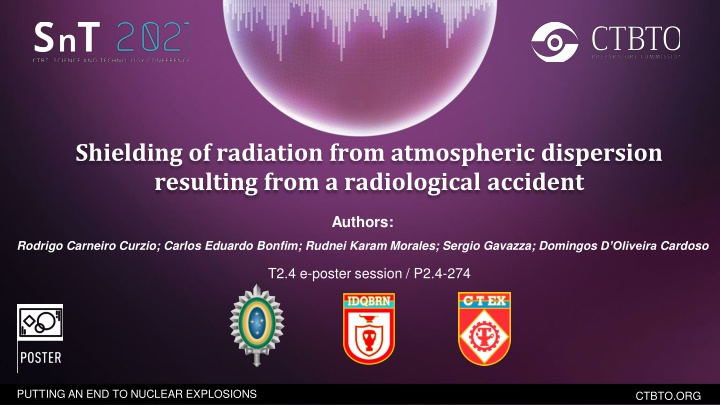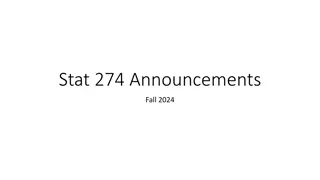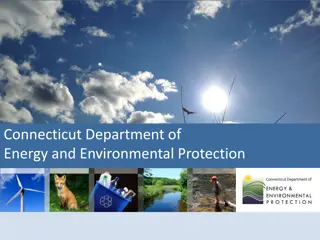
Radiation Shielding in Radiological Accidents
This study investigates radiation shielding against atmospheric dispersion resulting from a radiological accident in a small nuclear reactor. It analyzes Cs-137's contribution using analytical and numerical models to determine effective doses and simulate shielding scenarios, emphasizing emergency response planning. The study highlights the importance of protective actions, sheltering, and mitigation strategies in such events.
Download Presentation

Please find below an Image/Link to download the presentation.
The content on the website is provided AS IS for your information and personal use only. It may not be sold, licensed, or shared on other websites without obtaining consent from the author. If you encounter any issues during the download, it is possible that the publisher has removed the file from their server.
You are allowed to download the files provided on this website for personal or commercial use, subject to the condition that they are used lawfully. All files are the property of their respective owners.
The content on the website is provided AS IS for your information and personal use only. It may not be sold, licensed, or shared on other websites without obtaining consent from the author.
E N D
Presentation Transcript
Shielding of radiation from atmospheric dispersion resulting from a radiological accident Authors: Rodrigo Carneiro Curzio; Carlos Eduardo Bonfim; Rudnei Karam Morales; Sergio Gavazza; Domingos D Oliveira Cardoso T2.4 e-poster session / P2.4-274 PUTTING AN END TO NUCLEAR EXPLOSIONS CTBTO.ORG
Shielding of radiation from atmospheric dispersion resulting from a radiological accident Poster No.: P2.4-274 This study describes the determination of the shielding against ionizing radiation from atmospheric dispersion arising from a radiological accident in a small nuclear reactor (SMR). Among the radionuclides from the inventory of this reactor, the contribution of Cs-137 was considered for simulation in HotSpot (analytical modeling) and ANSYS (numerical modeling), of the concentration and total effective doses (TEDE) received, both depending on the distance of the event. The analytical solution, based on the hypotheses of the Gaussian approach, aims to validate the numerical solution brought by the CFD techniques, in a simplified computational scenario, taking into account the set of partial differential equations that govern the physical phenomenon of the transport of this material radioactive. Additionally, for the analysis of shielding, Taylor s formulations were used to perform simple shielding calculations, considering only shelters, based on ordinary concrete, possibly existing in the contaminated area, and Broder, in multilaminated cases, with adding a layer of lead to the front of the wall. The relevance of this investigation shows the importance of planning responses in an emergency situation, considering the data assumed in the simulations.. ABSTRACT Disclaimer: The views expressed on this poster are those of the author and do not necessarily reflect the view of the CTBTO PUTTING AN END TO NUCLEAR EXPLOSIONS CTBTO.ORG
Shielding of radiation from atmospheric dispersion resulting from a radiological accident Poster No.: P2.4-274 INTRODUCTION Radiological Accident Source Term Atmospheric Dispersion Meterological conditions Equivalent Doses Health damage Protective Actions Protection actions linked to the initial phase of the radiological event SHELTER Disclaimer: The views expressed on this poster are those of the author and do not necessarily reflect the view of the CTBTO PUTTING AN END TO NUCLEAR EXPLOSIONS CTBTO.ORG
Shielding of radiation from atmospheric dispersion resulting from a radiological accident Poster No.: INTRODUCTION Source term of atmospheric dispersion: P2.4-274 Tab. 1: SMR radionuclide inventory (SCALE, 2020). Radionulide Activity Mass (g) Percentage Ba140 Cs137 I131 I135 Kr85 Kr85m Rn218 Rn219 Rn220 Rn222 Sr89 Sr90 Te132 Xe133 Xe133m Xe135 Xe135m TOTAL 9,228E+16 4,295E+15 4,746E+16 9,744E+16 6,153E+14 1,735E+16 2,811E+04 7,766E+03 2,334E+07 7,553E+01 6,185E+16 3,739E+15 6,911E+16 1,000E+17 1,210E+15 4,697E+16 1,383E+16 5,561E+17 3,41E+01 1,34E+03 1,03E+01 7,45E-01 4,25E+01 5,70E-02 5,14E-19 1,61E-17 6,84E-13 1,33E-14 5,76E+01 7,32E+02 6,05E+00 1,44E+01 7,29E-02 5,00E-01 4,10E-03 2,24E+03 1,52E-02 5,98E-01 4,62E-03 3,33E-04 1,90E-02 2,55E-05 2,30E-22 7,21E-21 3,06E-16 5,93E-18 2,57E-02 3,28E-01 2,71E-03 6,45E-03 3,26E-05 2,24E-04 1,83E-06 100% Fig. 1: SMR with 4%, 5% e 20% enrichment (SCALE). Disclaimer: The views expressed on this poster are those of the author and do not necessarily reflect the view of the CTBTO PUTTING AN END TO NUCLEAR EXPLOSIONS CTBTO.ORG
Shielding of radiation from atmospheric dispersion resulting from a radiological accident Poster No.: P2.4-274 Descrition of computacionalscenario: # General information about Accident: SRM chimney height: 8 m; METHODS Pasquill-Gifford s Class: F (moderately stable) The Accident has occurred daytime; No rain at moment of accident in SMR; Flat terrain, not very rough and without natural obstacles downstream; Diameter of the Cs-137 particle: dp = 1 m Airbone fraction: 100%; Respirable fraction: 100% Fig. 2: Illustrative scheme of the dispersion scenario. Disclaimer: The views expressed on this poster are those of the author and do not necessarily reflect the view of the CTBTO PUTTING AN END TO NUCLEAR EXPLOSIONS CTBTO.ORG
Shielding of radiation from atmospheric dispersion resulting from a radiological accident Poster No.: P2.4-274 RadiologicalAciddent in a SMR Reactor # #Computational ComputationalFluid FluidDynamics Dynamics: : Multiphase Multiphaseflow air+ Cs + Cs- -137 flow 137 particulate particulate) ) Atmospheric Dispersion RANS RANSModel Model: : METHODS ( (atmospheric atmosphericair Continuity Equation; Moviment Equation; Computational Modeling Advection-diffusionEquation. # # Gaussian GaussianApproach Advection-diffusionequation Approach: : k k- - Turbulence TurbulenceModel Model ANSYS 2021 R1 HotSpot Health Physics Cs-137 Concentration (Bq/m ) Equivalent Dose, TEDE, (Sv) Conversion Conversionfactors factors( (concentration concentrationto to dose) dose) # Federal # Federal Guidance GuidanceReport Report11 11 Disclaimer: The views expressed on this poster are those of the author and do not necessarily reflect the view of the CTBTO PUTTING AN END TO NUCLEAR EXPLOSIONS CTBTO.ORG
Shielding of radiation from atmospheric dispersion resulting from a radiological accident Poster No.: P2.4-274 Point of interest "i" is the possible place Point of interest "i" is the possible place for shelter, from coordinates: for shelter, from coordinates: (? = 400 ? 1500 ?,? = 0,? = 1.5 ?) Dose at a point of interest (i): ????? ANSYS (CFD); ANSYS (CFD); GaussianApproach) Approach). HotSpot ( HotSpot (Gaussian METHODS Calculate the reference Transmission Factor: ???= ?? ??= 10 = 10 mSv mSv( (Shelter Shelter) ) ????? Calculate the Transmission Factor of the shelter (???) (Taylor (Taylor ???????? ) ) (Broder (Broder ???????? ) ) No Yes Add a layer of lead to the front of the Shelter wall. Shielding is effective for protection against Cs-137. ???> ???? Disclaimer: The views expressed on this poster are those of the author and do not necessarily reflect the view of the CTBTO PUTTING AN END TO NUCLEAR EXPLOSIONS CTBTO.ORG
Shielding of radiation from atmospheric dispersion resulting from a radiological accident Poster No.: P2.4-274 Intercomparisonof computationalmodels (ANSYS and HotSot): RESULTS Fig. 3: Results obtained in analytical and numerical simulations Disclaimer: The views expressed on this poster are those of the author and do not necessarily reflect the view of the CTBTO PUTTING AN END TO NUCLEAR EXPLOSIONS 76 CTBTO.ORG
Shielding of radiation from atmospheric dispersion resulting from a radiological accident Poster No.: P2.4-274 Intercomparisonof computationalmodels (ANSYS and HotSot): RESULTS Fig. 4: Results obtained in the analytical and numerical simulations (from 400 m). Average percentage error between results: 5% It is possible to use both methodologies for shielding analysis Disclaimer: The views expressed on this poster are those of the author and do not necessarily reflect the view of the CTBTO PUTTING AN END TO NUCLEAR EXPLOSIONS 76 CTBTO.ORG
Shielding of radiation from atmospheric dispersion resulting from a radiological accident Poster No.: P2.4-274 Shelter TransmissionFactor Results (???): D = s FR Tab. 2: Reference Transmission Factor Values (???). Reference Transmission Factor HotSpot 6,67E-04 7,69E-04 9,09E-04 1,12E-03 1,35E-03 1,59E-03 1,85E-03 2,17E-03 2,50E-03 2,86E-03 3,23E-03 3,70E-03 i TEDE i RESULTS Distance (m) ANSYS 6,71E-04 7,10E-04 8,25E-04 1,04E-03 1,36E-03 1,73E-03 2,03E-03 2,28E-03 2,48E-03 2,70E-03 3,05E-03 3,47E-03 400 500 600 700 800 900 1000 1100 1200 1300 1400 1500 FT = 0,4348 s FT FR s i Addition of lead to wall of the shelter Disclaimer: The views expressed on this poster are those of the author and do not necessarily reflect the view of the CTBTO PUTTING AN END TO NUCLEAR EXPLOSIONS CTBTO.ORG
Shielding of radiation from atmospheric dispersion resulting from a radiological accident Poster No.: P2.4-274 BilaminarTransmission Factor Curve and Adjustment Equation: RESULTS ( ) 1,17 = + x 1,71 07 FR E e i ? 1,71? + 07 ??? ?= ?1 1,17?? ?? Fig. 5: Curve obtained for the Broder Transmission Factor. Disclaimer: The views expressed on this poster are those of the author and do not necessarily reflect the view of the CTBTO PUTTING AN END TO NUCLEAR EXPLOSIONS CTBTO.ORG
Shielding of radiation from atmospheric dispersion resulting from a radiological accident Poster No.: P2.4-274 Shelter thickness analysis (x=[400 a 1.500]; y=0; z=1,5): Tab. 3: Shelter thickness. HotSpot Thickness [cm] of the shelter 20,56 20,43 20,29 20,11 19,95 19,81 19,68 19,54 19,42 19,31 19,20 19,09 ANSYS RESULTS Thickness [cm] of the shelter 20,55 20,50 20,37 20,17 19,95 19,76 19,63 19,53 19,43 19,32 19,21 19,10 Distance [m] Greater thickness 400 500 600 700 800 900 1000 1100 1200 1300 1400 1500 Decreasing behavior Smaller thickness Disclaimer: The views expressed on this poster are those of the author and do not necessarily reflect the view of the CTBTO PUTTING AN END TO NUCLEAR EXPLOSIONS CTBTO.ORG
Shielding of radiation from atmospheric dispersion resulting from a radiological accident Poster No.: P2.4-274 Shelter thickness analysis (x=[400 a 1.500]; y=0; z=1,5): * RESULTS * * * Fig. 6: Fitted curves to the results obtained in the numerical and analytical simulations. * 5th degree polynomial * Disclaimer: The views expressed on this poster are those of the author and do not necessarily reflect the view of the CTBTO PUTTING AN END TO NUCLEAR EXPLOSIONS CTBTO.ORG
IME IME Shielding of radiation from atmospheric dispersion resulting from a radiological accident Poster No.: P2.4-274 Final considerations: CONCLUSIONS Atmospheric Dispersion Characterization of the source term Dipersion scenario Compliance with normative aspects regarding the planning of responses in emergency situations. Disclaimer: The views expressed on this poster are those of the author and do not necessarily reflect the view of the CTBTO PUTTING AN END TO NUCLEAR EXPLOSIONS CTBTO.ORG
Shielding of radiation from atmospheric dispersion resulting from a radiological accident Poster No.: P2.4-088 P2.4-274 Obrigado! Thank you Capitain Curzio, M.Sc. Brazilian Army Officer + 55 21 2410-6329 curzio.carneiro@eb.mil.br Disclaimer: The views expressed on this poster are those of the author and do not necessarily reflect the view of the CTBTO PUTTING AN END TO NUCLEAR EXPLOSIONS CTBTO.ORG




